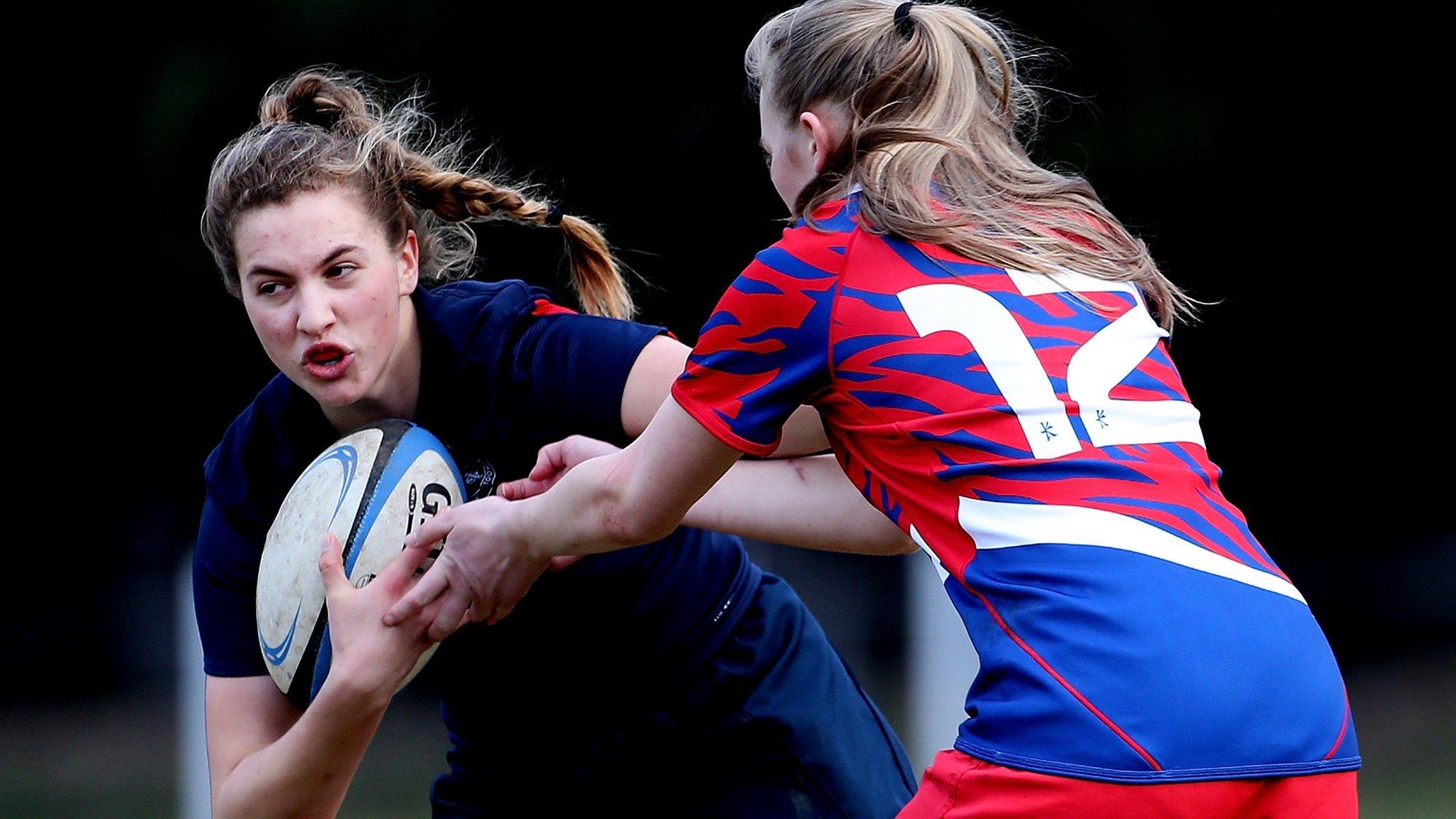Six Nations: Jeremy Guscott on England, Scotland, Ireland and Wales
- Published
- comments

The Six Nations dust has settled. Now for the post-mortem.
England coach Eddie Jones may have claimed the Grand Slam at the first attempt but, as he made clear immediately after winning it, this campaign will be picked apart to find out where his team can improve.
It will be the same for all the home nations.
So who were the winners and losers - both team and individual - from this year's championship?
England
England hugely exceeded my expectations. I thought they might well go backwards after finishing second four years in a row in the tournament, but Jones has inspired the team with his new messages and the experience he has brought from around the world of rugby.
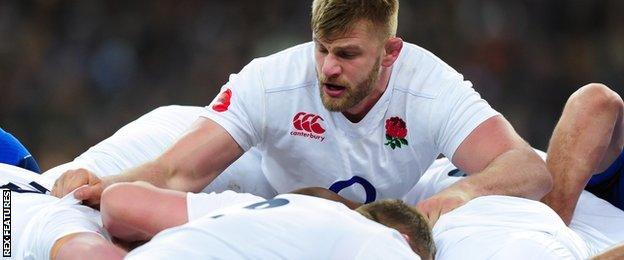
George Kruis led the tournament in line-out catches with 27
Their attack has been excellent with players playing what they see in front of them. It has been genuine heads-up rugby, spotting mismatches and gaps rather than blindly running patterns.
Individually the players have rarely dropped below good. Second row George Kruis has been exceptional, his fitness and work-rate are excellent and he has made a huge contribution.
Wing Anthony Watson has been the best back - every time he got the ball he looked electric and like he could make things happen. Owen Farrell should be highly commended for playing so well out of position at centre rather than his preferred fly-half spot as well.
Score: 8
Wales
Before the tournament, I thought Wales were the likeliest winners, given the experience in their ranks. They have proven players who have won titles and Lions call-ups, and have been forged in the white heat of close, high-quality Test matches.
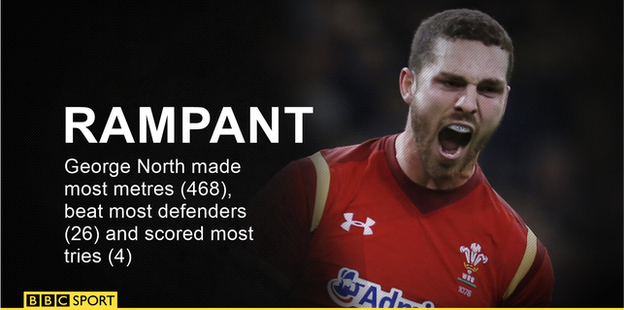
I think where they weren't at their best was the pace of attack. They have plenty of fast, powerful runners but the ball was not being recycled quickly enough. I think having Dan Biggar at fly-half who, for all his qualities, is not the most attacking 10, has also restricted them.
They also seem to be changing the way they attack - switching the point of attack more regularly where previously they have been a bit predictable in going the same way again and again.
But at least now - three and a half years out from a World Cup - is the time to be making those big, fundamental changes.
It is great to see wing George North getting his hands on the ball and scoring tries again for his country after a difficult year with injury. Number eight Taulupe Faletau was a big contributor in terms of the work-rate he got though in both attack and defence.
Score: 7
Scotland
I hope this campaign is the tipping point between Scotland being a bottom-half side and one that challenges for one of the top-three positions every year.
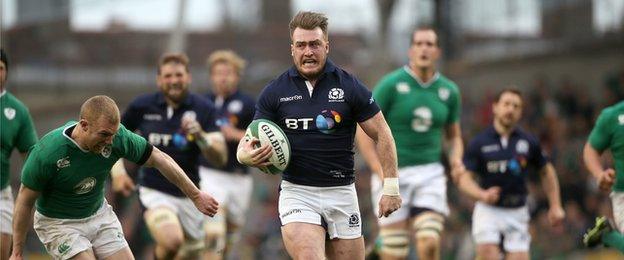
Stuart Hogg beat more defenders (17) than any other Scotland player
But I have my reservations. They need to reproduce the improvement they have shown throughout this championship next year and then the following year.
Full-back Stuart Hogg played incredibly well in attack, scoring some superb tries and bringing some lovely touches of magic to the tournament. Centre Duncan Taylor has had a very good Six Nations, scrum-half Greig Laidlaw is playing some of the best rugby we have seen from him for a while and WP Nel has locked down his side of the scrum.
The foundation of a good squad is there. The question is whether Vern Cotter's free-wheeling "ruck-and-run" style is the best way to harness the players' potential.
You look at England flankers James Haskell and Chris Robshaw - 30 and 29 respectively, with lots of miles on the clock - who are still carrying hard and tackling hard all the way through 80 minutes. Scotland have to believe they can match and better the Auld Enemy in that area. At the moment they don't.
Score: 7.5
Ireland
I think Ireland got worked out a little bit.
Teams looked ready for some of their trademark little set moves like fly-half Johnny Sexton's loop around a big midfield runner.
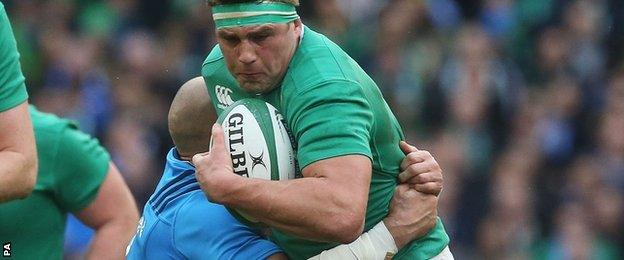
CJ Stander carried more than any other player in the tournament, taking the ball on 79 times
They have to be really precise and accurate if they are to make Joe Schmidt's prescriptive game-plan work. If they fall off those standards, they can be a little lost.
Sometimes the players seem a little slow and stifled in how they play because they are thinking about their role and position rather than running onto the ball and then reacting with instinct and vision.
They have had a lot of injuries, but in the absence of some of those established names we have seen the likes of flankers Josh van der Flier and CJ Stander, and centre Stuart McCloskey, come through - they have been real finds.
Sexton has had a difficult tournament off the pitch in some ways, finding himself unwillingly at the centre of debates and controversy around his head injuries, but he still played very well.
Robbie Henshaw was their best player for me though. He is both solid and rangy, but also quite sneakily pacy and with some smart footwork - he is a multi-dimensional player.
Score: 7
Player of the tournament: Billy Vunipola (England)
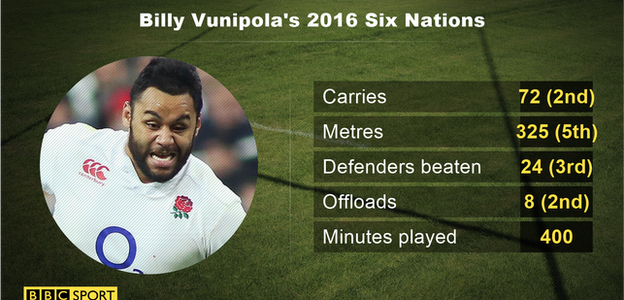
Vunipola's performance in various aspects of the game and, in brackets, where he ranks compared to the rest of the players in the Six Nations
He has played as big as he looks.
It was taking two or three defenders to haul the number eight down at times. That means that the opposition player who might have been attempting to turn over possession was taken out of the equation and England had a platform of quick ball to attack from.
His performances were a rallying point and brought the best out of his England team-mates
Best newcomer: Maro Itoje (England)
The England second row is doing everything a seasoned old professional should at the age of just 21. All the experience that takes years and multiple Tests to soak into a player seems to be inherent in him, and that is very exciting.
Try of the tournament: Jamie Heaslip (Ireland) v Italy
Six Nations tries of the tournament
A lovely piece of ambition from Ireland as they run from inside their own 22m. I like the way lots of different players bring something to the passage of play.
There is Sexton's initial spot of the space, Simon Zebo's back-of-the-hand offload, Jared Payne's floated inside ball, Sexton's little show of the ball, Fergus McFadden's line and finally Jamie Heaslip's splashdown over the line.
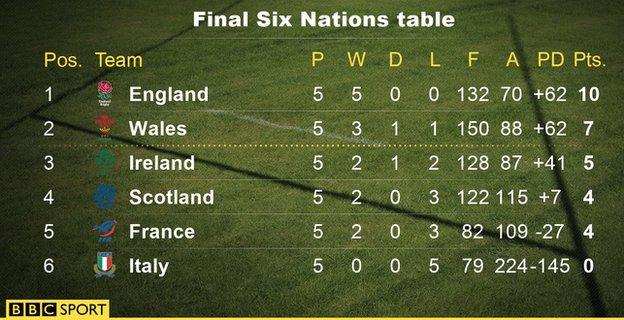
- Published20 March 2016
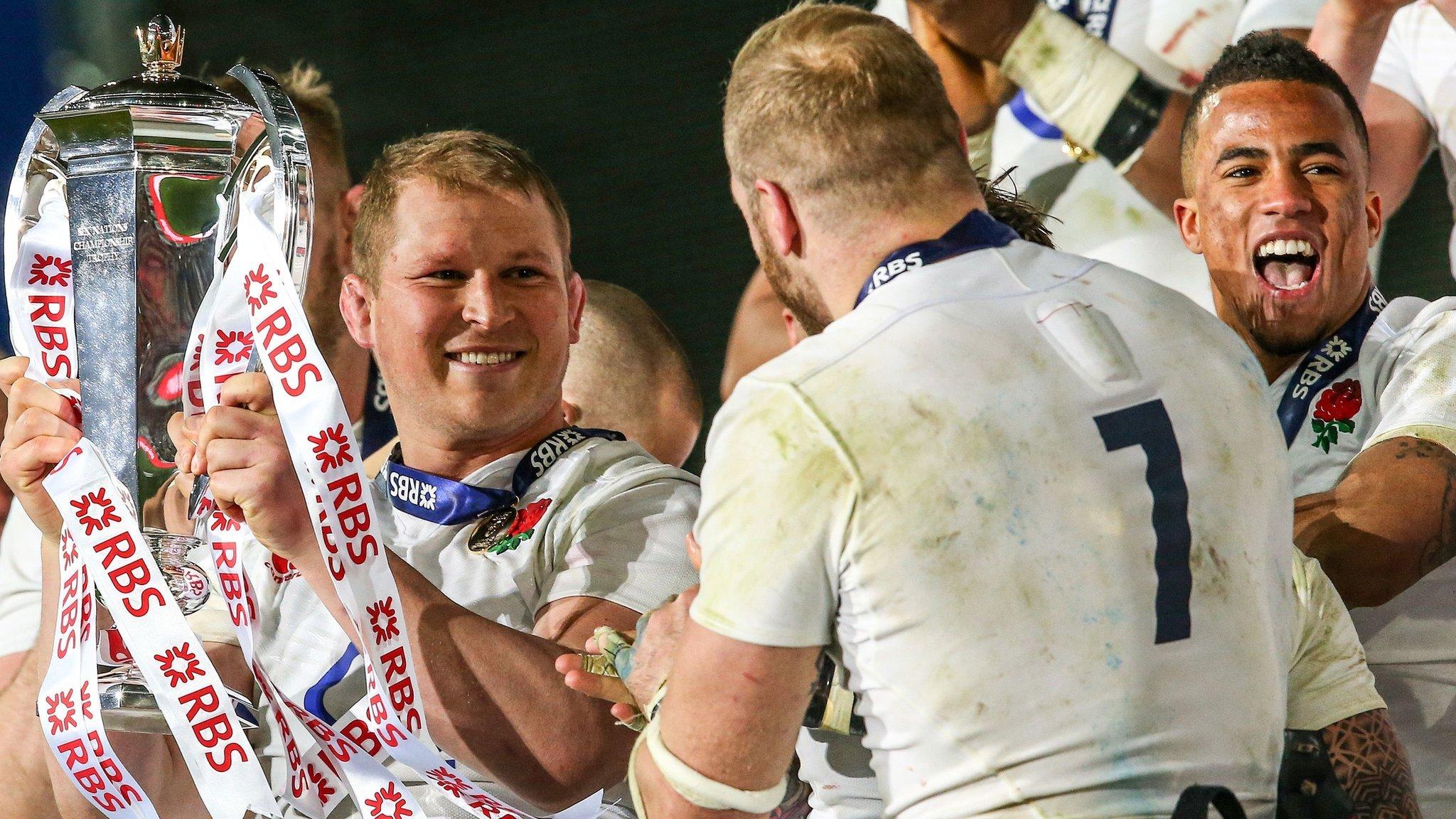
- Published20 March 2016
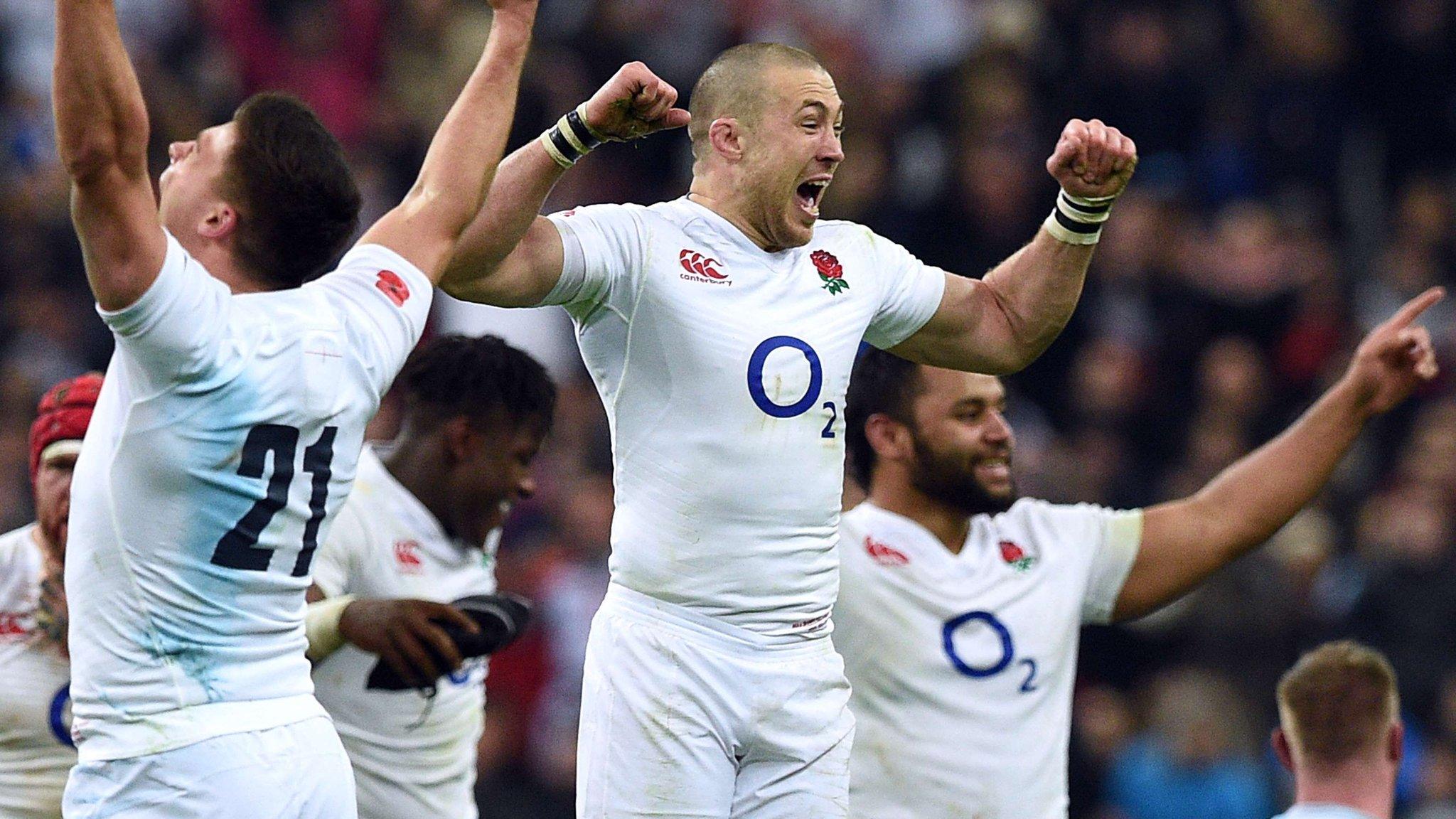
- Published14 September 2016
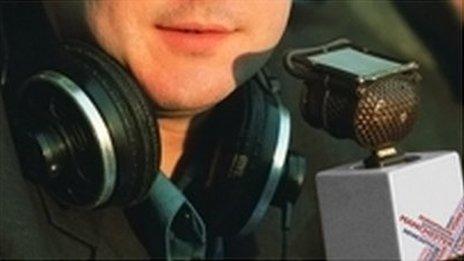
- Published15 February 2019
